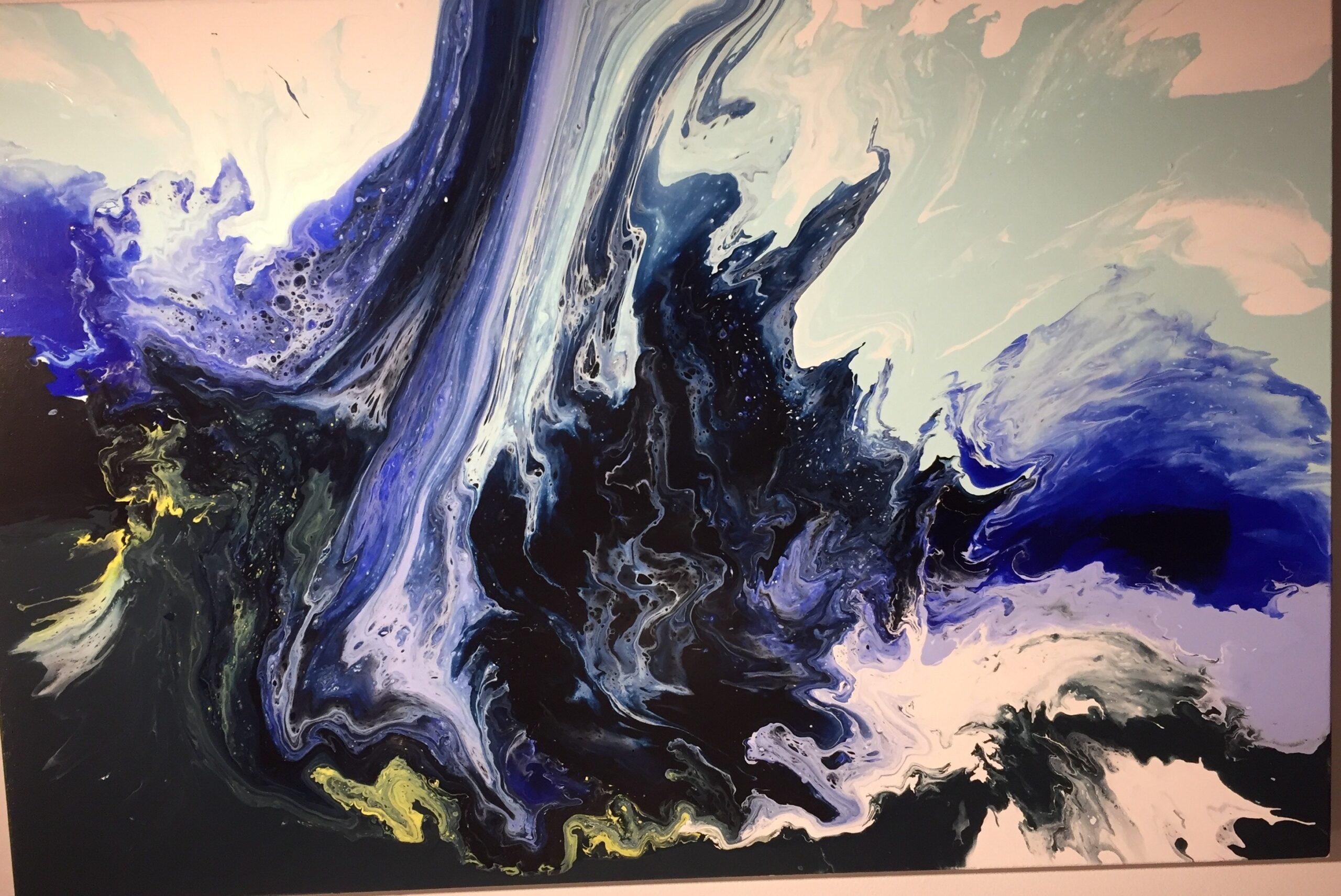
Acrylic pouring has to be one of the coolest painting techniques that I have ever encountered on the internet.
During the past summer, I saw many craft stores, like Hobby Lobby, selling products like pre-mixed paint and books about all the different pouring techniques.
Even though I have seen this, and many videos of it being done online, I, myself, discovered this form of art a few years ago, before it became a trend this year. Though I am definitely ahead of the curve on this latest viral trend, I am glad the rest of the world has finally caught up to this unique take on paint.
“I think you get a big bang for your buck and big results, without much instruction,” said art department chair Mark Swain. “They also engage the painter very quickly, which builds their confidence and keeps them coming back.”
Basically, acrylic pour paintings are paintings made with many colors of acrylic paint, which are mixed with a pouring medium, like Floetrol or Liquitex, and silicone oil. When all of these are mixed together, it gets poured on a blank paint canvas, and it creates a really cool marble-like design, with the silicone oil inside the paint mixture, creating “cells” in the painting.
“Acrylic pour paintings are created by using acrylic paint with an additive to make the paint more fluid,” said Director of the Art Gallery Natalie Swain. “The painting is then moved, tipped or manipulated to form a shape.”
There are a variety of different ways to pour the paint onto the paint canvas. One method is called the flip-cup technique.
This means you pour all of the different colored paint mixtures into one cup and then place it upside-down on the canvas. When you place it, you have to lift the cup, and let the paint flow on the entire canvas, while also tilting it, making sure to completely cover all of the edges and negative space.
“They are paintings that utilize gravity and the fluidity of acrylic paint and polymer emulsion to give the painter the freedom to explore abstraction,” Mark Swain said.
Through a matter of trial and error, besides using silicone oil to create the cells in my paintings, I have also tried using a mixture of dish soap and water, which only worked for a few of the paintings I made. I also tried using a bottle of liquid school glue, like Elmer’s Glue-All, with water in the paint mixture, but this only worked for a little while.
Even though it’s a relatively new art form, many people are trying it for a few reasons; it’s suitable for beginners, little material is needed and it’s definitely a fun hobby.
Since it’s suitable for beginners, this means that it requires no artistic abilities like drawing or traditional painting. I don’t have the artistic talent of a drawer or a painter, so I find this to be a perfect activity to do when I’m at home.
The only materials needed for this activity are acrylic paint, a paint canvas, a garbage bag/drop cloth, a pouring medium of some kind and silicone oil. Of course, more supplies like popsicle sticks, small plastic cups and a regular-sized cup will be needed, but all of these are inexpensive.
The reason why it’s a fun hobby is because whatever colors of acrylic paint are being used, every single time the cup of paint is poured on the canvas, it comes out looking like an actual, unique piece of art. Personally, I found it to be a really relaxing and stress-free activity, and I would suggest any and everyone to give it a try.
“It allows people with or without art training, the ability to connect with abstraction,” Swain said.
(Featured artwork created by Lewis University Alumni, Julianna Walen)
Photo credit: Katelyn Leano, Lewis University
